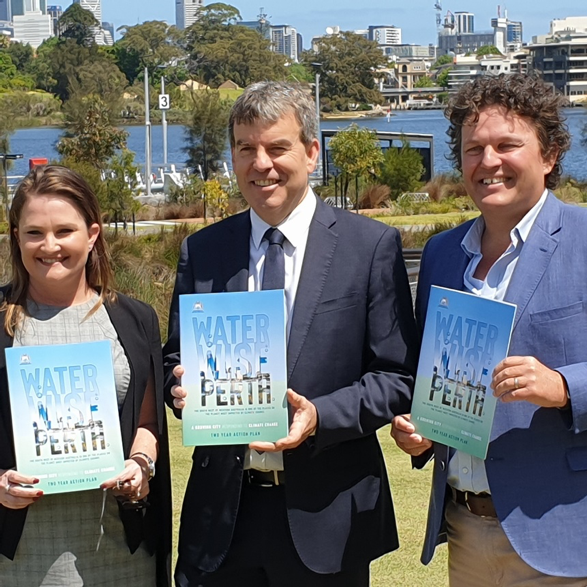WA Government releases a new plan for a ‘waterwise’ Perth
It's fantastic to see Perth and Western Australia applying the research and kicking so many water sensitive city goals domestically and internationally.

The latest is the WA Government’s release of the Waterwise Perth Action Plan—a coordinated state government response to the impacts of climate change and the agreed direction for transitioning Perth to a leading waterwise city by 2030. Western Australia uses the term ‘waterwise’ to communicate the concept of water sensitive cities.
The action plan is supported by the work of Perth’s Water Sensitive Transition Network (WSTN), which is a critical part of Perth’s waterwise journey. The network is already implementing several waterwise actions, outlined in its implementation plan.
The government’s two-year action plan, launched by the Hon. Dave Kelly (Minister for Water), is the first step in delivering Perth’s vision of ‘A leading waterwise city by 2030’. Its 38 actions will be delivered through a program of close co-design and co-delivery with stakeholders, including local governments, industry, NGOs, traditional owners and the broader community. Eight government agencies have commitments in this initial action plan.
Subsequent plans will aim to achieve the 10-year targets identified in this first plan.
The Waterwise Perth Action Plan sets targets to respond to the major impacts of climate change on water resources and liveability, to support the 3.5 million population anticipated to reside in Perth by 2050.
‘We used to get 420 billion litres of water running into these dams each year but, with a significant decline in rainfall since the mid-1970s from climate change, we can now expect just 25 billion litres,’ said Minister Kelly. ‘Declining rainfall has also reduced groundwater levels by 1.8 metres since 1988,’ he said.
The plan takes the next steps from saving water to improving how Perth manages water in its urban environments so it has healthy waterways and wetlands, attractive green spaces and water security beyond 2030. The plan includes:
- assistance for households to be more waterwise and reduce annual per person use to 110kL
- improved water management of sporting ovals and green spaces
- all government-led urban development projects in Perth and Peel to be 100 per cent waterwise
- METRONET precincts designed to consider all elements of the water cycle
- increased use of recycled water
- increases in the urban tree canopy to reduce the urban heat island effect.
‘It adopts a ‘water sensitive cities’ approach to urban development that reduces consumption and captures, transports, cleans and stores water in the landscape for multiple social, economic and environmental health benefits,’ Minister Kelly said.
WSTN member, former CRCWSC board member, and current CRCWSC WA Regional Advisory Panel chair, Dr Mike Mouritz, praised the plan: ‘It’s a great step in the right direction, and I think the sentiment of the WSTN is we can use this as an important building block to push further towards being a water sensitive city.
‘The entire WSTN initiative, championed via the CRCWSC process, has set a model for other climate change related responses, to deal with the growing vulnerabilities we face,’ Dr Mouritz said.
More than 200 stakeholders provided their knowledge and insight into the plan. This is another great milestone for our colleagues in Perth: well done!